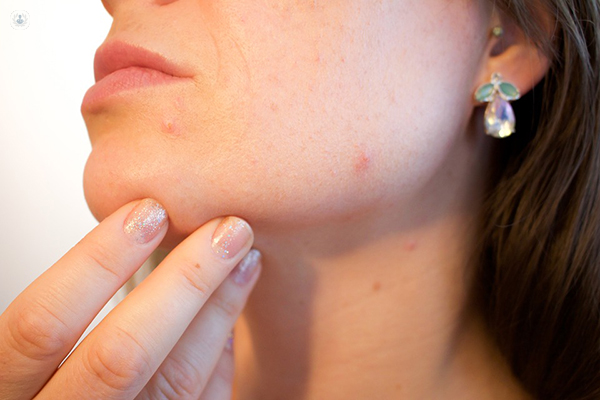

What is hyperandrogenism?
Hyperandrogenism refers to the excessive presence of the male sex hormones testosterone, androsterone and androstenedione in women, and the effects that they have on the female body.

What are the symptoms of hyperandrogenism?
High levels of testosterone in the female body can cause the following male characteristics:
- Oily skin (seborrhoea)
- Acne
- Thick hair growth (hirsutism) - on the face particularly the beard and moustache area, limbs, underarm and pubic area
- Deep voice
- Male pattern balding
- Irregular menstruation
- Increased muscle mass and smaller breast size
- Infertility
- Obesity
What are the causes of hyperandrogenism?
The main causes of this disorder are:
- Polycystic ovary syndrome (PCOS)
- Malfunction of the adrenal gland
- Diseases of the pituitary gland – Cushing syndrome or Acromegaly
- Obesity and metabolic syndrome
- Certain medications – including anabolic steroids
How is hyperandrogenism diagnosed?
To determine whether a woman has hyperandrogenism, blood tests are used to check different hormones. This includes testing the thyroid function and looking for the follicle stimulating hormone, the sex hormone binding globulin and for testosterone, among others. There may also be a pelvic ultrasound scan to check for ovarian cysts.
Can hyperandrogenism be prevented?
There is no concrete way to prevent hyperandrogenism but it is important to maintain a healthy lifestyle in relation to food and exercise. It is also recommended to maintain a normal weight and to check that glucose, lipid levels and blood pressure are at normal levels to prevent any complications in the future.
What is the treatment of hyperandrogenism?
Hyperandrogenism is treated with the use of hormone therapy. Treatment for patients that suffer from acne includes topical creams, oral antibiotics such as tetracycline, antiandrogens (hormone therapy, including birth control pill) and oral isotretinoin. Patients with the condition can also change their eating habits in order to lose excess weight.
